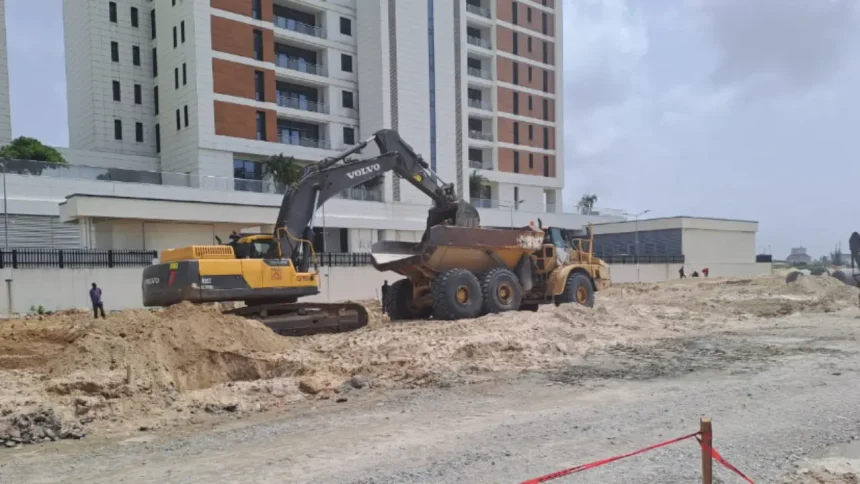The Lagos-Calabar Coastal Highway, a monumental infrastructure project spearheaded by the Minister of Works, Dave Umahi, promises to revolutionize transportation and connectivity across Nigeria’s southern coastline. Umahi, in a recent stakeholder engagement, underscored the project’s resilience against environmental challenges, particularly flooding, assuring that the highway is being constructed to withstand such events for at least five decades. This resilience stems from a meticulously planned elevation of the pavement level, strategically positioned above the projected flood levels, essentially reaching the first floor of many buildings. This innovative approach ensures the highway’s long-term viability and mitigates potential disruptions caused by climate change and rising sea levels.
Complementing the elevated pavement is a robust retaining wall system, designed to further fortify the highway against erosion and flooding. This integrated design not only safeguards the structural integrity of the road but also protects the surrounding environment. Furthermore, the inclusion of a dedicated cable duct within the highway’s structure represents a forward-thinking approach to utility management. This allows telecommunication companies, such as MTN and African Plus, to install and maintain their cables without the need for disruptive road excavations, preserving the road’s surface and minimizing traffic disruptions. This thoughtful integration of infrastructure elements enhances the overall efficiency and sustainability of the project.
Security and rapid response are paramount considerations in the highway’s design. Umahi highlighted the integration of closed-circuit television cameras (CCTV) along the entire stretch of the highway, enabling continuous monitoring and swift response to any incidents. With a targeted response time of less than five minutes, the system aims to enhance safety and security for all road users. Additionally, the highway will feature a dedicated evacuation corridor, ensuring a safe and efficient exit route in case of emergencies. This comprehensive approach to safety and security underscores the project’s commitment to protecting lives and minimizing potential risks.
The Lagos-Calabar Coastal Highway project transcends mere infrastructure development; it embraces sustainable practices and contributes to environmental preservation. The use of concrete pavement, a key feature of the project, significantly reduces carbon emissions compared to traditional asphalt pavements. This commitment to eco-friendly materials aligns with global efforts to combat climate change and qualifies the project for carbon credits, further incentivizing sustainable infrastructure development. Furthermore, the highway’s landscape will feature extensive tree planting, transforming the route into a scenic and environmentally enriching corridor. This green initiative not only enhances the aesthetic appeal of the highway but also contributes to carbon sequestration and promotes biodiversity.
The highway’s construction incorporates innovative engineering solutions to accommodate existing infrastructure and industrial activities. In the vicinity of the Dangote Refinery, a strategically designed flyover with spans of 60 meters and 41.6 meters will ensure seamless access for heavy-duty trucks transporting goods to and from the refinery. This flyover not only facilitates efficient transportation but also minimizes traffic congestion and enhances safety. The integration of a seven-axial road further enhances the highway’s capacity to handle heavy traffic and specialized vehicles. This strategic infrastructure development caters to the growing industrial needs of the region while minimizing disruption to existing operations.
Beyond its core function as a transportation artery, the Lagos-Calabar Coastal Highway is envisioned as a multifaceted corridor that contributes to the economic and social well-being of the communities it traverses. The project includes designated relief centers along the route, offering travelers amenities such as restrooms, snack bars, petrol stations, supermarkets, and even medical facilities. These strategically located centers provide essential services, enhance traveler comfort, and stimulate local economies. This holistic approach to highway development transforms the project from a mere transportation route into a vibrant economic and social corridor, benefiting both travelers and local communities. The collaboration with the state government, which has provided land for these relief centers, highlights the project’s collaborative nature and its commitment to community development. Umahi’s acknowledgement of stakeholders’ support, particularly those driven by a passion for development rather than financial gain, underscores the project’s significance as a catalyst for progress and prosperity. The commendation of Hitech Construction Company, the contractor responsible for the project, for its commitment to excellence and timely execution further reinforces the project’s commitment to quality and efficiency.


